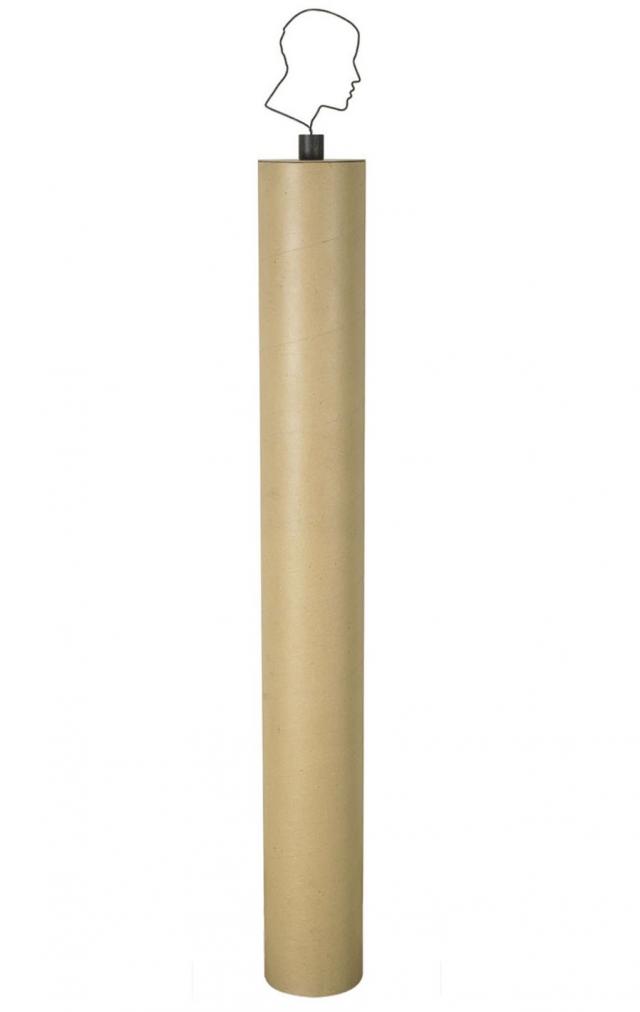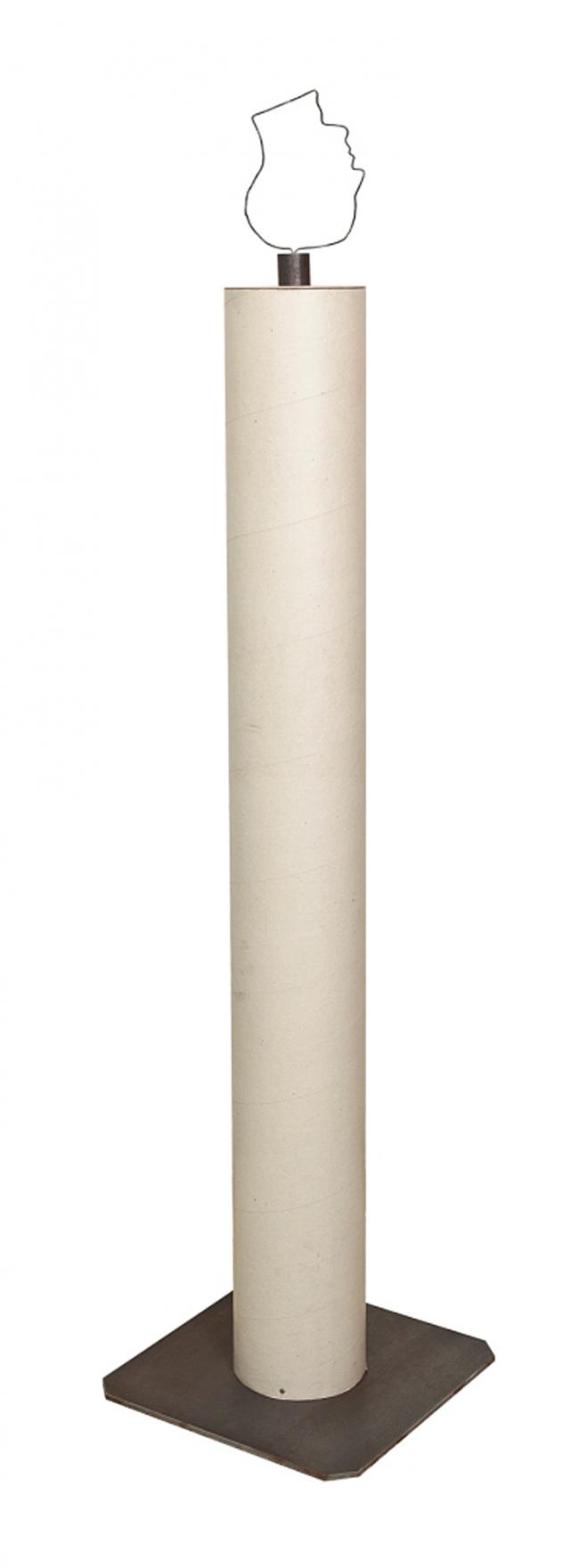Echoing the thoughts of Ernst Mach, an Austrian physician who tried to decrypt the principle of the mirror, Markus Raetz developed a number of works that either reproduce phenomena that are similar to those that occur with a mirror, or incorporate the object itself.
With Kopfdraht (Head Wire), the head depicted in a wire outline executes a gradual vertical inversion in time with the viewer’s horizontal movement around it. Arriving on the other side of the piece, the viewer discovers an identical figure although it is now positioned upside-down. Starting with two silhouettes in profile, Raetz bends and shapes his length of wire by following the curves of the faces, which are connected though inverted with respect to each other.
Raetz borrowed the model of the head from Piero della Francesca, a portrait he also drew on in 1992 for a sculpture in the round called Kopf I (Head I). Here the result, although sculptural, is perceived as a drawing that has been freely traced out in space. In its continuous outline, it reflects the idea of a flow of forms both real and abstract, which are tangled up in a continuous metamorphosis.
Raetz sheds light on the abstract zones that surface in reality’s interstices whilst underscoring the importance of viewpoint for perceiving an object. The ability to see and recognise faces depends on the active involvement of the viewer and the acuity of their memory; this conditions the formation of the image, the identification of a form only being possible in connection with known images.
Jean-Hubert Martin says of Raetz: “By dint of empirical experiments, he has elaborated a world of drawings and objects that all contribute to casting doubt on the visual certitudes that ensure our day-to-day life… Thanks to him, anamorphosis has enjoyed its most extravagant transpositions in sculpture. Very few artists of his generation have managed, as he has, to find new forms for complex ideas about perception and the repercussions they have on our interpretation of the world.”
With Kopfdraht (Head Wire), the head depicted in a wire outline executes a gradual vertical inversion in time with the viewer’s horizontal movement around it. Arriving on the other side of the piece, the viewer discovers an identical figure although it is now positioned upside-down. Starting with two silhouettes in profile, Raetz bends and shapes his length of wire by following the curves of the faces, which are connected though inverted with respect to each other.
Raetz borrowed the model of the head from Piero della Francesca, a portrait he also drew on in 1992 for a sculpture in the round called Kopf I (Head I). Here the result, although sculptural, is perceived as a drawing that has been freely traced out in space. In its continuous outline, it reflects the idea of a flow of forms both real and abstract, which are tangled up in a continuous metamorphosis.
Raetz sheds light on the abstract zones that surface in reality’s interstices whilst underscoring the importance of viewpoint for perceiving an object. The ability to see and recognise faces depends on the active involvement of the viewer and the acuity of their memory; this conditions the formation of the image, the identification of a form only being possible in connection with known images.
Jean-Hubert Martin says of Raetz: “By dint of empirical experiments, he has elaborated a world of drawings and objects that all contribute to casting doubt on the visual certitudes that ensure our day-to-day life… Thanks to him, anamorphosis has enjoyed its most extravagant transpositions in sculpture. Very few artists of his generation have managed, as he has, to find new forms for complex ideas about perception and the repercussions they have on our interpretation of the world.”

